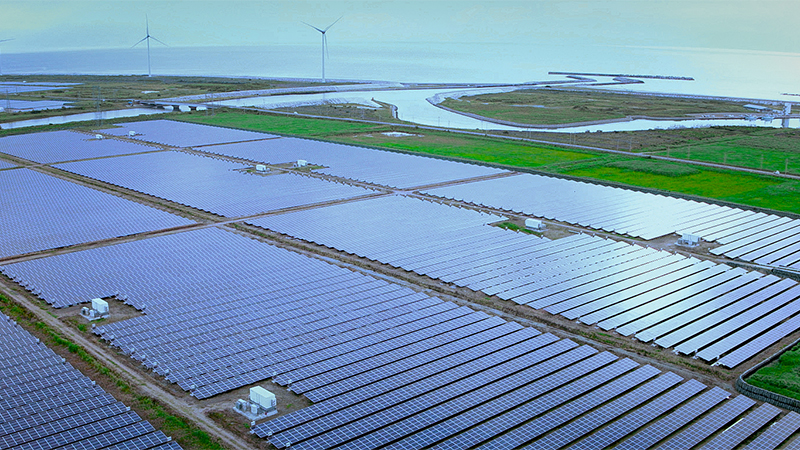May 14, 2025
Sumitomo Corporation
Using CO2 and Silicon-Based Waste to Synthesize Next-Generation Semiconductor Raw-Materials: Toward Commercialization Through Joint Demonstration Project with Tohoku University- Entrusted by NEDO to promote carbon recycling and recycling of silicon-based industrial waste -
Sumitomo Corporation (Head Office: Chiyoda-ku, Tokyo; Representative Director, President and Chief Executive Officer: Shingo Ueno) has launched a demonstration project in collaboration with Tohoku University (Location: Sendai City, Miyagi Prefecture; President: Teiji Tominaga) to develop synthesis technology for silicon carbide (*1) using CO2 and silicon-based industrial waste (*2). This initiative aims to achieve both carbon recycling (*3) and industrial waste reutilization while contributing to the domestic production of silicon carbide, a material used in semiconductors. This project is being supported by the New Energy and Industrial Technology Development Organization (NEDO).

Project Background
By 2030, solar power is expected to account for 14% to 16% of Japan's power supply configuration. While its use is growing, the disposal of solar panels is becoming social issues. Their typical lifespan is 20 to 30 years, and approximately 800,000 tons (equivalent to around 40 million panels) are expected to be disposed annually by the 2030s. Of this amount, silicon cells*4 will account for approximately 20,000 to 30,000 tons. While recycling technologies have been established for glass, aluminum and copper from solar panels, recycling silicon cells had always been difficult, resulting in large amounts being disposed. Furthermore, in semiconductor manufacturing, the wafer slicing process also generates silicon-based industrial waste that is challenging to recycle.
On the other hand, silicon carbide is an essential resource for Japan's semiconductor and steel industries, used in power semiconductors for EVs and data centers, abrasives and refractory materials. However, Japan relies on imports for 80% of its supply. Conventional production methods are energy-intensive, consuming large amounts of electricity while generating high CO2 emissions and waste.
Project Overview
Sumitomo Corporation and Tohoku University are jointly developing a "Silicon carbide synthesis technology by carbon recycling" using CO2 and silicon-based industrial waste. The goal is not only to utilize CO2 as a raw material but also to create a technology that effectively reuses silicon waste, reduces manufacturing costs and builds a domestic supply chain for commercial use.
The demonstration project is part of NEDO's "Development of Technologies for Carbon Recycling and Next-Generation Thermal Power Generation / Technology Development at CO2 Effective Utilization Centers/ Development and Demonstration Project of CO2 Effective Utilization Technology at Research Centers (all basic research areas)." The demonstration will be conducted at the Carbon Recycling Demonstration Research Hub located at Chugoku Electric Power's Osaki Power Station over a three-year period from April 2025 through March 2028.
Role of Each Organization
Sumitomo Corporation
- Research on stable supply sources for CO2 and silicon-based industrial waste
- Develop silicon carbide market and sales channels in Japan and overseas
Tohoku University
- Optimize reaction conditions and verify purification processes for silicon carbide production
- Provide technologies, patents and academic knowledge related to carbon recycling

Outlook
This demonstration project aims to realize the production of high-purity silicon carbide and establish a system for its stable supply to address supply chain challenges faced not only by the semiconductor industry – which struggles with the disposal of silicon-based waste – but also by a wide range of other industries. These include the solar panel industry, which faces similar waste disposal issues, as well as the ceramic and refractory industries, which require silicon carbide as a raw material. The project therefore targets the resolution of issues across a broad industrial spectrum, extending beyond just the semiconductor sector. The partners will further strengthen collaboration, aiming for early commercialization after 2028 through joint research and scale-up testing.
Sumitomo Corporation's Efforts in Resource Recycling
Since 2023, Sumitomo Corporation has been conducting joint research with Tohoku University on producing yellow phosphorus – a raw material for semiconductors – from recycled resources. In 2024, the company began a demonstration project on the reuse and recycling of solar panels. Leveraging Sumitomo Corporation's robust distribution network, this demonstration project will contribute to the establishment of a circular economy (*5) and reinforce the domestic supply chain contributing to the domestic production of silicon carbide. Sumitomo Corporation aims to establish a circular supply chain in chemical materials that support all industries.
Related Press Releases :
Demonstration testing underway for establishing a solar panel reuse/recycling business
Signed a joint research agreement with Tohoku University for domestic production of recycled yellow phosphorus
- *1 Silicon carbide (SiC)
- A compound made of silicon (Si) and carbon (C), it is used as a material for next-generation power semiconductors with excellent high-voltage and high-temperature characteristics, as well as a raw material for refractories, ceramics, abrasives, etc. Demand for SiC power semiconductors is rapidly expanding as they contribute to energy conservation in EVs and other devices.
- *2 Silicon-based industrial waste (silicon sludge)
- Fine powders and slicing waste generated during silicon slicing and back grinding processes in , such as recycling solar panels or manufacturing semiconductors.
- *3 Carbon recycling
- An initiative to treat CO2 as a resource by capturing and reusing it in various products and fuels to suppress emissions.
- *4 Silicon cell
- The core component of a solar panel that converts solar energy into electricity using silicon's semiconductor properties; also referred to as a solar cell.
- *5 Circular economy
- An economic model that maximizes resource circulation and minimizes waste while generating new added value through reuse and recycling, aiming for a sustainable society.



